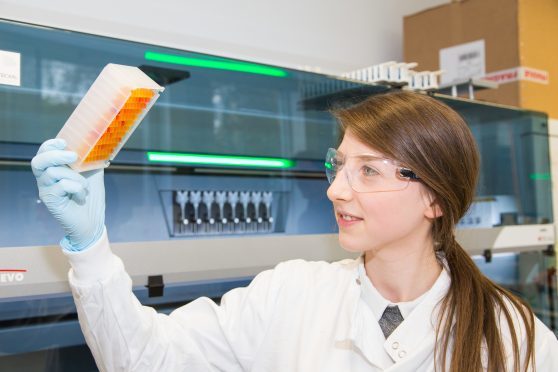Three new animal science research facilities are to be built in Scotland thanks to £2.2million funding from the government’s Innovate UK Fund.
SRUC, which received the funding through its involvement in the Centre for Innovation in Excellence in Livestock (CIEL), said the new centres would enable innovative progress in livestock feeding efficiency and meat eating quality in Britain.
The exact location of the new centres is yet to be confirmed, however it is thought they will be located at SRUC’s Easter Bush Campus, near Edinburgh.
The first facility will be one of the few feed mills in Europe designed specifically to manufacture experimental pig and poultry diets under accurate and precise conditions.
The second will be a laboratory equipped to develop faster ways of measuring meat eating quality based on the information used in animal breeding programmes, while the third will utilise the latest sensor technology to make sheep production more efficient by identifying animals best able to convert the feed they eat into marketable meat.
SRUC’s animal and veterinary sciences group manager said the new feed mill would create a world-leading research facility for pigs and poultry.
He said: “Apart from studying the addition of enzymes and micro-nutrients this capability will allow us to really investigate the use of home-grown proteins in diets as well as new varieties of cereals. So, apart from offering a boost to the pig and poultry sectors, this investment has the potential to reduce import bills and offer new market opportunities for Britain’s arable sector.”
SRUC’s livestock genetics researcher, Mike Coffey, said the sheep facility will use advanced, automated feeders linked to individual electronic animal identity systems to enable researchers to record many measurements for the individual feed intake of mature ewes and maturing lambs and relate that to their growth rate, feed intake and carcase quality.
He said: “It will inform programmes selecting the female blood lines to pass on these reduced cost traits to future flocks. Particular attention will be given to maintenance costs of mature ewes since the national ewe flock is a major consumer of livestock food and land area to produce it. It is estimated that raising feed efficiency this way could save the UK sheep industry £30million.”
Mr Coffey said the meat facility would enable in-house meat quality measurements to be taken and calibrated leading to an overall better meat eating experience for consumers.
